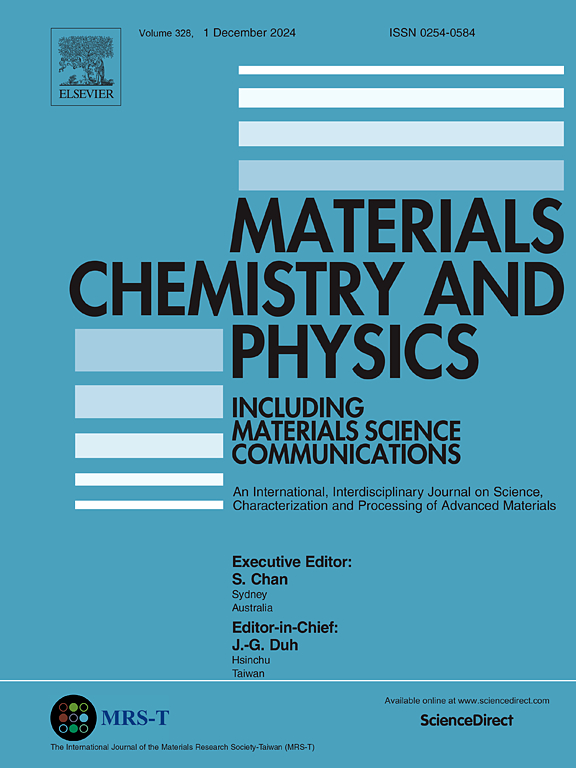Sugarcane bagasse-derived silica/carbon composite electrode for tetracycline detection
IF 4.3
3区 材料科学
Q2 MATERIALS SCIENCE, MULTIDISCIPLINARY
引用次数: 0
Abstract
Tetracycline (Tc), a widely employed antibiotic in medical treatments and animal husbandry, is frequently released into environmental matrices, posing significant concerns related to food safety, human health, and ecological stability. Consequently, detecting Tc at trace concentrations through methods that are cost-effective, rapid, and highly selective remains a critical and ongoing research challenge. Carbon paste sensors (CPS) are widely recognized as versatile tools for electrochemical sensing applications. A particularly promising approach for enhancing sensor performance involves incorporating cost-effective and eco-friendly agro-industrial residues, such as biosilica derived from sugarcane ash. This study proposes the modification of CPS with commercial silica gel (Si-CPS) and biosilica (BioSi-CPS) for the electrochemical detection of Tc. Experimental findings demonstrate that Tc efficiently accumulates on the surface of the modified sensors, significantly enhancing their oxidation current response. Differential pulse voltammetry (DPV) was employed to evaluate Tc detection, with BioSi-CPS exhibiting superior electrochemical performance. This enhancement is attributed to the increased electroactive surface area and improved electrochemical properties introduced by the biosilica modification. Using BioSi-CPS, Tc was reliably detected at low concentrations, exhibiting linear response ranges of 6–80 μmol L−1 and 100–1000 μmol L−1. The sensor demonstrated excellent stability and reproducibility, with no significant interference from common excipients such as glucose, ascorbic acid, citric acid, and mannose. The results highlight the potential of biosilica-modified CPS as an effective, sustainable, and cost-efficient, and highly selective platform for the detection of tetracycline in environmental monitoring applications.
用于四环素检测的甘蔗甘蔗渣硅/碳复合电极
四环素(Tc)是一种广泛应用于医疗和畜牧业的抗生素,它经常被释放到环境基质中,对食品安全、人类健康和生态稳定造成重大关切。因此,通过具有成本效益、快速和高选择性的方法检测微量浓度的Tc仍然是一个关键和持续的研究挑战。碳糊传感器(CPS)被广泛认为是电化学传感应用的通用工具。一种特别有前途的提高传感器性能的方法涉及结合具有成本效益和环保的农业工业残留物,例如从甘蔗灰中提取的生物二氧化硅。本研究提出用商业硅胶(Si-CPS)和生物二氧化硅(BioSi-CPS)修饰CPS,用于电化学检测Tc。实验结果表明,Tc在改性后的传感器表面有效地积累,显著增强了传感器的氧化电流响应。差分脉冲伏安法(DPV)对Tc的检测效果进行了评价,其中BioSi-CPS表现出优异的电化学性能。这种增强是由于生物二氧化硅改性增加了电活性表面积和改善了电化学性能。使用BioSi-CPS,可以在低浓度下可靠地检测Tc,线性响应范围为6 ~ 80 μmol L−1和100 ~ 1000 μmol L−1。该传感器具有良好的稳定性和重复性,无葡萄糖、抗坏血酸、柠檬酸和甘露糖等常用辅料的干扰。这些结果突出了生物硅修饰的CPS作为一种有效、可持续、经济、高选择性的四环素检测平台在环境监测应用中的潜力。
本文章由计算机程序翻译,如有差异,请以英文原文为准。
求助全文
约1分钟内获得全文
求助全文
来源期刊

Materials Chemistry and Physics
工程技术-材料科学:综合
CiteScore
8.70
自引率
4.30%
发文量
1515
审稿时长
69 days
期刊介绍:
Materials Chemistry and Physics is devoted to short communications, full-length research papers and feature articles on interrelationships among structure, properties, processing and performance of materials. The Editors welcome manuscripts on thin films, surface and interface science, materials degradation and reliability, metallurgy, semiconductors and optoelectronic materials, fine ceramics, magnetics, superconductors, specialty polymers, nano-materials and composite materials.
 求助内容:
求助内容: 应助结果提醒方式:
应助结果提醒方式:


